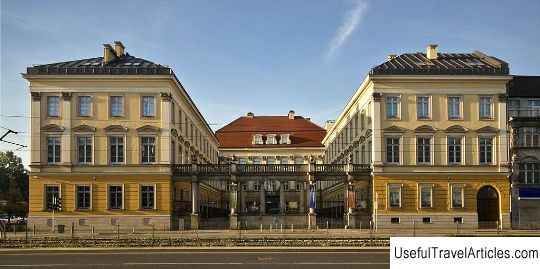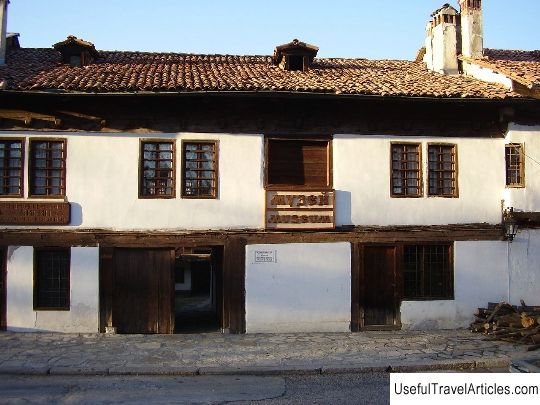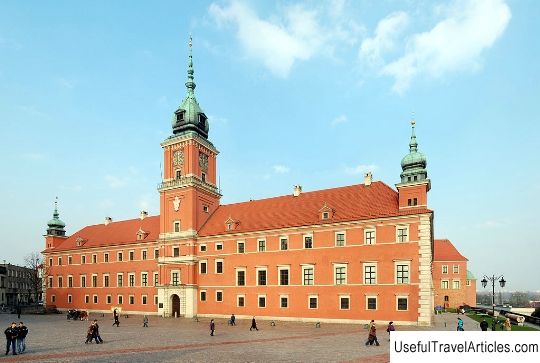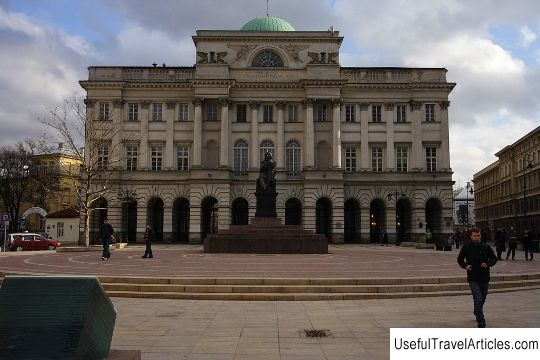Royal Palace (Palac krolewski) description and photos - Poland: Wroclaw

Royal Palace (Palac krolewski) description and photos - Poland: Wroclaw. Detailed information about the attraction. Description, photographs and a map showing the nearest significant objects. The name in English is Palac krolewski. Photo and descriptionThe Royal Palace is the palace of the Prussian kings in the Polish city of Wroclaw, formerly known as the Breslau Palace. At present, the City Museum of Wroclaw is located here. The palace was built in 1717 in the style of Viennese palaces for Baron Heinrich Gottfried von Spatgen. In 1750, after Prussia took control of Silesia, the palace was bought by the Prussian king Frederick the Great and converted into his residence. In 1751-1753, the building was enlarged by the design of the royal architect Johann Bowmann. After the death of Frederick the Great in 1786, the palace became the property of Frederick Wilhelm II of Prussia. He invited the architect Karl Gottard Langhans to rebuild the building in a classical style. Two wings were built surrounding the north courtyard. In 1845 the architect Friedrich August Stuler rebuilt the palace in the style of the Italian neo-Renaissance, building a new south wing and open pavilions. In 1918, the palace was donated to the city of Breslau. In September 1926, a museum was opened with an exhibition dedicated to Frederick the Great. The museum has reconstructed the interiors of that period, and also exhibited a collection of works of art from Silesia. In May 1945, the palace was badly damaged during the siege of the city at the end of World War II. In 1960, the palace was divided: one wing housed the Archaeological Museum, and the other the Ethnographic Museum. In 2008, the reconstruction was completely completed, a new museum was opened, telling about the history of Wroclaw. building a new south wing and open pavilions.In 1918, the palace was donated to the city of Breslau. In September 1926, a museum was opened with an exhibition dedicated to Frederick the Great. The museum has reconstructed the interiors of that period, and also exhibited a collection of works of art from Silesia. In May 1945, the palace was badly damaged during the siege of the city at the end of World War II. In 1960, the palace was divided: one wing housed the Archaeological Museum, and the other the Ethnographic Museum. In 2008, the reconstruction was completely completed, a new museum was opened, telling about the history of Wroclaw. building a new south wing and open pavilions.In 1918, the palace was donated to the city of Breslau. In September 1926, a museum was opened with an exhibition dedicated to Frederick the Great. The museum has reconstructed the interiors of that period, and also exhibited a collection of works of art from Silesia. In May 1945, the palace was badly damaged during the siege of the city at the end of World War II. In 1960, the palace was divided: one wing housed the Archaeological Museum, and the other the Ethnographic Museum. In 2008, the reconstruction was completely completed, a new museum was opened, telling about the history of Wroclaw. The museum has reconstructed the interiors of that period, and also exhibited a collection of works of art from Silesia.In May 1945, the palace was badly damaged during the siege of the city at the end of World War II. In 1960, the palace was divided: one wing housed the Archaeological Museum, and the other the Ethnographic Museum. In 2008, the reconstruction was completely completed, a new museum was opened, telling about the history of Wroclaw. The museum has reconstructed the interiors of that period, and also exhibited a collection of works of art from Silesia.In May 1945, the palace was badly damaged during the siege of the city at the end of World War II. In 1960, the palace was divided: one wing housed the Archaeological Museum, and the other the Ethnographic Museum. In 2008, the reconstruction was completely completed, a new museum was opened, telling about the history of Wroclaw.      We also recommend reading Kaminaljuyu Mayan site description and photos - Guatemala: Guatemala Topic: Royal Palace (Palac krolewski) description and photos - Poland: Wroclaw. |




